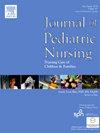儿科患者鼻气管插管相关医疗器械压疮发生的危险因素
IF 2.3
4区 医学
Q2 NURSING
Journal of Pediatric Nursing-Nursing Care of Children & Families
Pub Date : 2025-10-08
DOI:10.1016/j.pedn.2025.09.031
引用次数: 0
摘要
目的:儿科患者鼻气管插管相关医疗器械压疮的危险因素分析仍然有限。因此,本临床研究旨在探讨鼻气管插管引起鼻压损伤(NPI)的潜在危险因素。方法:我们对在日本某三级医疗中心接受鼻气管插管机械通气的危重患儿进行了回顾性观察队列研究。使用多元逻辑回归分析人口统计数据和器械相关因素。结果:通过鼻气管插管进行机械通气的儿童患者均被纳入。在3015例患者中,642例接受鼻气管插管。总共有75例(12%)患者发生NPI。基于单因素分析,年龄较小(20个月对36个月,p = 0.0042)、儿童重症监护病房住院时间较长(5个月对4个月,p = 0.0035)、21三体(5%对0.4%;p结论:21三体、紫绀型先天性心脏病和ldlt后是接受鼻气管插管的儿科患者NPI的危险因素。对实践的影响:这些发现强调了儿科护理在实施量身定制的预防策略方面的关键作用,例如常规皮肤评估,细致的装置固定和跨学科合作,以降低高危儿科人群鼻压损伤的风险。本文章由计算机程序翻译,如有差异,请以英文原文为准。
Risk factors for development of medical device-related pressure ulcers associated with nasotracheal intubation in pediatric patients
Objective
Risk factor analyses of medical device-related pressure ulcers associated with nasotracheal intubation in pediatric patients remain limited. Therefore, this clinical study aimed to identify the potential risk factors of nasal pressure injuries (NPI) caused by nasotracheal intubation.
Methods
We conducted a retrospective observational cohort study of critically ill children who underwent mechanical ventilation via nasotracheal intubation at a single tertiary care center in Japan. Demographic data and device-related factors were analyzed using multivariate logistic regression.
Results
Pediatric patients who received mechanical ventilation via nasotracheal intubation were included. Of the 3015 patients, 642 who were receiving nasotracheal intubation were analyzed. In total, 75 (12 %) patients developed NPI. Based on the univariate analysis, younger age (20 vs. 36 median months; p = 0.0042), longer length of pediatric intensive care unit stay (5 vs. 4 median days; p = 0.0035), trisomy 21 (5 % vs. 0.4 %; p < 0.001), cyanotic congenital heart disease (28 % vs. 4 %; p < 0.001), and post-living donor liver transplantation (LDLT) status (12 % vs. 2 %; p < 0.001) were significantly associated with NPI. Among these factors, trisomy 21, cyanotic congenital heart disease, and post-LDLT remained significantly associated with NPI in the multivariate analysis.
Conclusions
Trisomy 21, cyanotic congenital heart disease, and post-LDLT are risk factors of NPI in pediatric patients receiving nasotracheal intubation.
Implications to practice
These findings underscore the critical role of pediatric nursing in implementing tailored prevention strategies—such as routine skin assessments, meticulous device fixation, and interdisciplinary collaboration—to reduce the risk of nasal pressure injuries in high-risk pediatric populations.
求助全文
通过发布文献求助,成功后即可免费获取论文全文。
去求助
来源期刊

Journal of Pediatric Nursing-Nursing Care of Children & Families
NURSING-PEDIATRICS
CiteScore
3.70
自引率
8.30%
发文量
291
审稿时长
65 days
期刊介绍:
Official Journal of the Society of Pediatric Nurses and the Pediatric Endocrinology Nursing Society (PENS)
The Journal of Pediatric Nursing: Nursing Care of Children and Families (JPN) is interested in publishing evidence-based practice, quality improvement, theory, and research papers on a variety of topics from US and international authors. JPN is the official journal of the Society of Pediatric Nurses and the Pediatric Endocrinology Nursing Society. Cecily L. Betz, PhD, RN, FAAN is the Founder and Editor in Chief.
Journal content covers the life span from birth to adolescence. Submissions should be pertinent to the nursing care needs of healthy and ill infants, children, and adolescents, addressing their biopsychosocial needs. JPN also features the following regular columns for which authors may submit brief papers: Hot Topics and Technology.
 求助内容:
求助内容: 应助结果提醒方式:
应助结果提醒方式:


